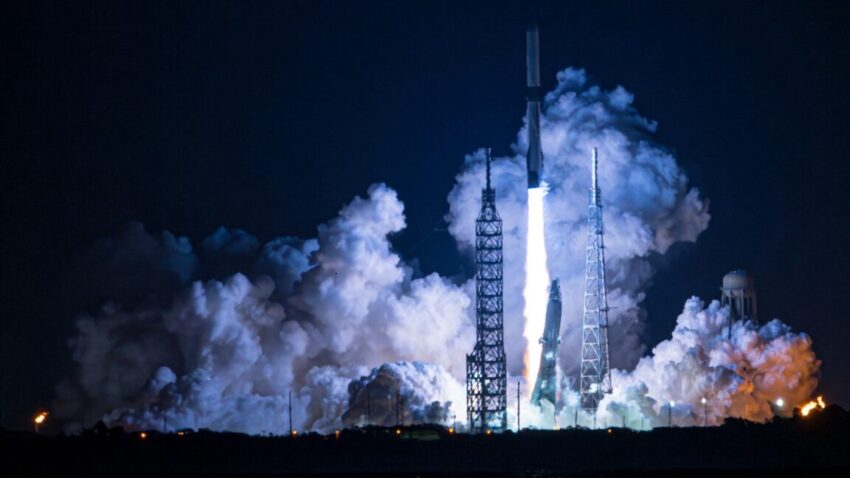
blue origin will move heaven and earth Blue Origin’s CEO has expressed the company’s commitment to accelerating NASA’s lunar exploration efforts, emphasizing their readiness to assist in achieving a quicker return to the Moon.
blue origin will move heaven and earth
Blue Origin’s Commitment to NASA’s Lunar Goals
In a recent interview with Ars Technica, Dave Limp, the CEO of Blue Origin, articulated the company’s determination to support NASA in its mission to land humans on the Moon as swiftly as possible. Limp stated, “We just want to help the US get to the Moon. If NASA wants to go quicker, we would move heaven and Earth, pun intended, to try to get to the Moon sooner. And I think we have some good ideas.” This declaration underscores Blue Origin’s strategic positioning as a key player in the burgeoning space industry, particularly in relation to NASA’s Artemis program.
The Artemis Program and Its Objectives
The Artemis program, initiated by NASA, aims to return humans to the lunar surface by the mid-2020s, with a long-term vision of establishing a sustainable human presence on the Moon. This initiative is not only about exploration but also serves as a stepping stone for future missions to Mars. The program includes a series of missions, with Artemis I successfully launching an uncrewed Orion spacecraft around the Moon in late 2021. Following this, Artemis II will carry astronauts around the Moon, leading up to Artemis III, which aims to land astronauts on the lunar surface.
NASA’s ambitious timeline has faced various challenges, including budget constraints, technical hurdles, and delays in the development of the Human Landing System (HLS). The HLS is crucial for transporting astronauts from lunar orbit to the Moon’s surface and back. Blue Origin was initially selected to develop this system but lost the contract to SpaceX in 2021. However, the company remains committed to contributing to lunar exploration in other capacities.
Blue Origin’s Capabilities and Innovations
Blue Origin, founded by Amazon’s Jeff Bezos, has made significant strides in the aerospace sector, particularly with its New Shepard suborbital vehicle and the upcoming New Glenn orbital rocket. The New Glenn, which is set to launch its second mission soon, is designed to carry larger payloads into orbit and is positioned as a competitor to SpaceX’s Falcon 9.
The New Glenn Rocket
The New Glenn rocket is a heavy-lift launch vehicle that stands at 98 meters tall and is designed to carry payloads of up to 45 metric tons to low Earth orbit. Its first launch was initially scheduled for 2020 but faced multiple delays. The upcoming mission, which includes the ESCAPADE spacecraft for NASA, is a critical step in demonstrating the rocket’s capabilities. The launch window opens at 2:45 PM ET (19:45 UTC) at Cape Canaveral Space Force Station in Florida, lasting just over two hours.
ESCAPADE, or the Escape and Plasma Acceleration and Dynamics Explorers, is a dual-spacecraft mission designed to study Mars’ atmosphere and its interaction with solar winds. This mission exemplifies Blue Origin’s commitment to supporting NASA’s broader scientific objectives, showcasing the company’s ability to contribute to various aspects of space exploration.
Potential Contributions to Lunar Missions
While Blue Origin may not be the primary contractor for the HLS, Limp indicated that the company has innovative ideas that could assist NASA in expediting its lunar missions. These ideas could involve leveraging Blue Origin’s existing technologies or developing new systems that enhance lunar transportation and logistics.
One area where Blue Origin could provide significant value is in the development of lunar landers and surface operations. The company has experience in building reliable and reusable rockets, which could translate into efficient lunar landers capable of multiple missions. Additionally, Blue Origin’s focus on sustainability aligns with NASA’s goals of creating a long-term presence on the Moon, where resources such as water ice could be utilized for life support and fuel production.
Industry Reactions and Stakeholder Perspectives
The space industry is increasingly competitive, with multiple companies vying for contracts and partnerships with NASA. Blue Origin’s proactive stance has garnered attention and support from various stakeholders, including government officials and industry experts. The company’s willingness to collaborate and innovate is seen as a positive development in the context of national space policy.
Government Support and Collaboration
Government officials have expressed optimism regarding private sector involvement in space exploration. The U.S. government has been actively encouraging partnerships with commercial entities to leverage their expertise and technologies. This approach aims to reduce costs and accelerate timelines for ambitious projects like the Artemis program.
NASA Administrator Bill Nelson has frequently emphasized the importance of collaboration with private companies. In a recent statement, he noted, “The future of space exploration relies on partnerships with the commercial sector. We need innovative solutions to meet our goals, and companies like Blue Origin are essential to that mission.” This sentiment reflects a broader trend in the space industry, where public-private partnerships are becoming increasingly vital.
Challenges Ahead
Despite the enthusiasm surrounding Blue Origin’s potential contributions, challenges remain. The space industry is fraught with uncertainties, including technical risks, funding issues, and regulatory hurdles. Blue Origin, like other companies, must navigate these complexities while maintaining its commitment to innovation and collaboration.
Moreover, the competition with SpaceX, which has already established a strong foothold in the lunar and Martian exploration landscape, poses a significant challenge. SpaceX’s Starship program, designed for deep space missions, has garnered substantial attention and investment, making it a formidable competitor for contracts and partnerships.
The Future of Lunar Exploration
The future of lunar exploration is poised for significant advancements, driven by both government initiatives and private sector innovations. Blue Origin’s commitment to supporting NASA’s goals is indicative of a broader trend where collaboration between public and private entities is essential for achieving ambitious space exploration objectives.
As NASA continues to refine its plans for the Artemis program, the involvement of companies like Blue Origin will be crucial in overcoming the challenges that lie ahead. The potential for new technologies, efficient launch systems, and innovative solutions will play a pivotal role in ensuring the success of lunar missions.
Conclusion
In summary, Blue Origin’s CEO Dave Limp has articulated a strong commitment to assisting NASA in its lunar exploration efforts. The company’s readiness to “move heaven and Earth” reflects a proactive approach to collaboration and innovation in the space industry. As the Artemis program progresses, the contributions of Blue Origin and other private companies will be vital in achieving the ambitious goal of returning humans to the Moon and establishing a sustainable presence there.
Source: Original report
Was this helpful?
Last Modified: November 9, 2025 at 3:35 am
2 views















